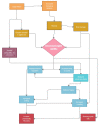Piglet Viability: A Review of Identification and Pre-Weaning Management Strategies
- PMID: 34679923
- PMCID: PMC8532860
- DOI: 10.3390/ani11102902
Piglet Viability: A Review of Identification and Pre-Weaning Management Strategies
Abstract
Increased attention on the effects of the global push for a larger litter size has focused on the increased occurrence of piglets with decreased viability, which have lighter birthweights and a reduced ability to thrive in early life. To improve their odds of survival, interventions must be timely and targeted. This requires the early identification of low-viability pigs and appropriate strategies to manage them. Using novel measures such as abdominal circumference and crown to the rump length in conjunction with birth weight may provide an improved protocol for the identification of those at most risk of preweaning mortality. Further, identifying these at-risk piglets allows interventions to increase their colostrum intake and heat provisions shortly following birth. The appropriate management of the pre- and post-partum sows will improve the chances of decreasing the number of piglets born with lower viability. However, this outcome is constrained by limitations in resources such as technology and staffing. If these challenges can be overcome, it will allow for greater control and increased effectiveness in the implementation of current and new management strategies.
Keywords: management; piglet; preweaning survival; viability.
Conflict of interest statement
The authors declare no conflict of interest.
Figures
References
-
- Edwards S.A. Perinatal mortality in the pig: Environmental or physiological solutions? Livest. Prod. Sci. 2002;78:3–12. doi: 10.1016/S0301-6226(02)00180-X. - DOI
-
- Merriam-Webster Merriam-Webster “Viability”. [(accessed on 5 February 2021)]. Available online: https://www.merriam-webster.com/dictionary/viability.
Publication types
LinkOut - more resources
Full Text Sources



